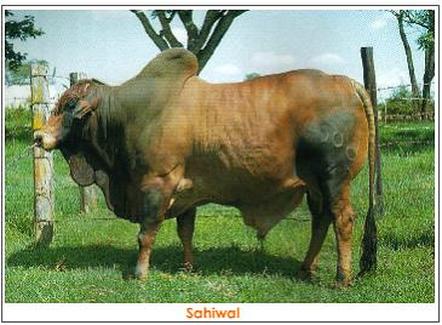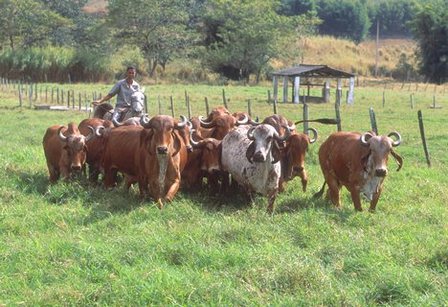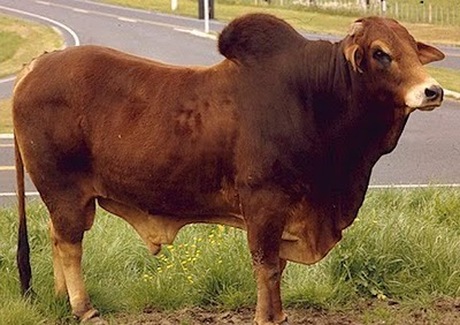ABOUT SAHIWAL
Sahiwal (Urdu: ساہیوال) is a city in Punjab, Pakistan. This city was a small village on the Karachi-Lahore railway line in 1865 when it was named Montgomery after Sir Robert Montgomery, then Lieutenant-Governor of Punjab.[1] It took its current name in 1966 after Sahi clan of KharalRajputs who were the actual inhabitants of this area.It is the administrative centre of Sahiwal District and Sahiwal Division.The districts of Okara and Pakpattan are under Sahiwal division. Sahiwal lies approximately 180 km from the major city of Lahore. And it is the biggest city between Lahore and Multan. The population is 207,388 (1998 Pakistan Census). Sahiwal District is included in the former Multan Division and lies between 30-39 north latitude and 73-06 longitude. The city lies in the densely populated region between the Sutlej and Ravi rivers. Irrigation in the region is provided by the Bari Doab Canal system. The principal crops are wheat, cotton, tobacco, legumes, potato and oilseeds. Cotton goods and lacquered woodwork are manufactured. About 18 miles Southwest of Sahiwal is Harappa, an ancient city of the world, oldest urban center of Harappan or Indus civilization in South Asia. About 28 miles (45 km) west of Sahiwal, at Kamalia, is the site of a Malli city captured by Alexander the Great in 325 bc. Pop. (1998) city, 207,388. The people of Sahiwal are known as Sahiwalians. This city got its name from the first inhibitants of this city the Sahis of kharal / Jatt origin. Sahis had their first settlement at the place called Yaadgar-e-Sahiwal. When the development was started under British rule in this area in 1865, Sahis moved to Chak No.60-61/G.D. Rai Haji Ali Sher Sahi is a prominent figure amongst the Sahis in this region.
Sahiwal (Urdu: ساہیوال) is a city in Punjab, Pakistan. This city was a small village on the Karachi-Lahore railway line in 1865 when it was named Montgomery after Sir Robert Montgomery, then Lieutenant-Governor of Punjab.[1] It took its current name in 1966 after Sahi clan of KharalRajputs who were the actual inhabitants of this area.It is the administrative centre of Sahiwal District and Sahiwal Division.The districts of Okara and Pakpattan are under Sahiwal division. Sahiwal lies approximately 180 km from the major city of Lahore. And it is the biggest city between Lahore and Multan. The population is 207,388 (1998 Pakistan Census). Sahiwal District is included in the former Multan Division and lies between 30-39 north latitude and 73-06 longitude. The city lies in the densely populated region between the Sutlej and Ravi rivers. Irrigation in the region is provided by the Bari Doab Canal system. The principal crops are wheat, cotton, tobacco, legumes, potato and oilseeds. Cotton goods and lacquered woodwork are manufactured. About 18 miles Southwest of Sahiwal is Harappa, an ancient city of the world, oldest urban center of Harappan or Indus civilization in South Asia. About 28 miles (45 km) west of Sahiwal, at Kamalia, is the site of a Malli city captured by Alexander the Great in 325 bc. Pop. (1998) city, 207,388. The people of Sahiwal are known as Sahiwalians. This city got its name from the first inhibitants of this city the Sahis of kharal / Jatt origin. Sahis had their first settlement at the place called Yaadgar-e-Sahiwal. When the development was started under British rule in this area in 1865, Sahis moved to Chak No.60-61/G.D. Rai Haji Ali Sher Sahi is a prominent figure amongst the Sahis in this region.
History
_______________
The city and district was known as Montgomery as the city of Sahiwal was founded in 1865 by Sir Robert Montgomery, then Lieutenant-Governor of Punjab.
It took its current name in 1966. Montgomery name was changed to Sahiwal by a famous politician of Sahiwal, Mr.Mufti Zia-ul-Hasan. Prior to this, Sahiwal was known by its native name Sahiwal, derived from the Sahi tribe which lived in the area of District Sahiwal Chak No.60-61/GD, CHAK NO 5/11L which is the basic village of Sahis
Sahiwal District(: ضلع ساہیوال)
-------------------------------------------------
is a district in the Punjab province of Pakistan. As of 1998, it had a population of 1,843,194 people, 16.27% of which were located in urban areas[1]. Since 2008, Sahiwal District along with Okara District and Pakpattan District has comprised the Sahiwal Division. The city of Sahiwal is the capital of both the district and the division. About 18 miles south-west of Sahiwal is Harappa, an ancient city of the world, oldest urban center of Harappan or Indus civilization in South Asia. About 28 miles (45 km) west of Sahiwal, at Kamalia, is the site of a Malli city captured by Alexander the Great in 325 bc. Pop. (1998) city, 207,38
_______________
The city and district was known as Montgomery as the city of Sahiwal was founded in 1865 by Sir Robert Montgomery, then Lieutenant-Governor of Punjab.
It took its current name in 1966. Montgomery name was changed to Sahiwal by a famous politician of Sahiwal, Mr.Mufti Zia-ul-Hasan. Prior to this, Sahiwal was known by its native name Sahiwal, derived from the Sahi tribe which lived in the area of District Sahiwal Chak No.60-61/GD, CHAK NO 5/11L which is the basic village of Sahis
Sahiwal District(: ضلع ساہیوال)
-------------------------------------------------
is a district in the Punjab province of Pakistan. As of 1998, it had a population of 1,843,194 people, 16.27% of which were located in urban areas[1]. Since 2008, Sahiwal District along with Okara District and Pakpattan District has comprised the Sahiwal Division. The city of Sahiwal is the capital of both the district and the division. About 18 miles south-west of Sahiwal is Harappa, an ancient city of the world, oldest urban center of Harappan or Indus civilization in South Asia. About 28 miles (45 km) west of Sahiwal, at Kamalia, is the site of a Malli city captured by Alexander the Great in 325 bc. Pop. (1998) city, 207,38
CLIMATE
The climate of Sahiwal district is extreme, reaching 52 °C in summer, and down to 5°C in winter. The soil of the district is very fertile. The average rainfall is about 2000 mm.[citation needed]
The climate of Sahiwal district is extreme, reaching 52 °C in summer, and down to 5°C in winter. The soil of the district is very fertile. The average rainfall is about 2000 mm.[citation needed]
Twin city
Sahiwal is twinned with the town of Rochdale, in Greater Manchester, North West England.[2] There is a direction sign in Rochdale's town centre pointing in Sahiwal's direction with "Sahiwal 3960 miles" written on it.
Sahiwal is twinned with the town of Rochdale, in Greater Manchester, North West England.[2] There is a direction sign in Rochdale's town centre pointing in Sahiwal's direction with "Sahiwal 3960 miles" written on it.
Broadcast media
There are various radio and cable networks broadcasting in the city, such as Sun Rise FM 96 Sahiwal radio and cable networks like Voltas Cable Network, Galaxy Cable Network and Geo Cable network. The main companies providing dial-up internet facilities are BrainNet and CyberNet. World Call Wireless has also started its operation in Sahiwal. World Call provides wireless telephones at low call rates and a wireless internet facility which is much faster than the dial-up service providers in the city. Recently, Wateen Telecom has also opened its office in Sahiwal. Wateen offers landline telephone, cellular phone, HAQ television, high-speed internet and WiMax.
Location
Sahiwal Division is located in the south-east of Punjab, from Multan Division it lies between 30-40 north latitude and 73-06 longitude. It is 500 ft (150 m) above sea level. It forms a parallelogram lying NE-SW along the River Ravi. It is 100 km from east to west and 45 km from the north-western boundary of the Division of Sahiwal, Division Faisalabad, District Toba Tek Singh. The dry River Khushak Bias separates it from the District Pakpattan. Okara District is east of the division. District Khanewal and District Vehari form boundaries with the division, and on the southern side is District Pakpattan, where there is a shrine of the SufiHazrat Baba Fareed Shaker Gunj.
Sahiwal Dairy Cattle Breed
The Sahiwal cattle breed is the best dairy breed of zebu or humped cattle (Bos Indicus), followed by the very similar Red Sindhi and Butana breeds[2]. It originated in the dry Punjab region which lies along the Indo-Pakistani border, and was once kept in large herds by professional herdsmen called "Jaanglees". With the introduction of irrigation to the region their numbers dripped, and farmers used them as draft and dairy animals. The Division Sahiwal has one of the best dairy breeds in India and Pakistan. It is thick-resistant, heat-tolerant and resistant to parasites, both internal and external. Cows average 2270 kilograms of milk while suckling a calf and much higher milk yields have been recorded. Due to their heat tolerance and high milk production they have been exported to other Asian countries, Africa, Caribbean and around the world. As oxen, they are docile but slow, making them more useful for slow work. Their colour can range from reddish brown to red, with varying amounts of white on the neck, and the underline. In males, the colour darkens towards the extremities, such as the head, legs and tails. Sahiwal breed arrived in Australia via New Guinea in the early 1950s. In Australia, the Sahiwal breed was initially selected as a dual-purpose breed. It played a valuable role in the development of the two Australian tropical dairy breeds, the Australian milking zebu and the Australian Fresian Sahiwal. Sahiwal breeds are now used in Australia for beef production, as crossing high-grade Sahiwal sires with Bos taurus animals produced a carcass of lean quality with desirable fat cover.
The Sahiwal breed is the heaviest milker of all zebu breeds and displays a well-developed udder. It sires small, fast-growing calves and is noted for its hardiness under unfavourable climatic conditions.[3][4][5]
Sahiwal Division is located in the south-east of Punjab, from Multan Division it lies between 30-40 north latitude and 73-06 longitude. It is 500 ft (150 m) above sea level. It forms a parallelogram lying NE-SW along the River Ravi. It is 100 km from east to west and 45 km from the north-western boundary of the Division of Sahiwal, Division Faisalabad, District Toba Tek Singh. The dry River Khushak Bias separates it from the District Pakpattan. Okara District is east of the division. District Khanewal and District Vehari form boundaries with the division, and on the southern side is District Pakpattan, where there is a shrine of the SufiHazrat Baba Fareed Shaker Gunj.
Sahiwal Dairy Cattle Breed
The Sahiwal cattle breed is the best dairy breed of zebu or humped cattle (Bos Indicus), followed by the very similar Red Sindhi and Butana breeds[2]. It originated in the dry Punjab region which lies along the Indo-Pakistani border, and was once kept in large herds by professional herdsmen called "Jaanglees". With the introduction of irrigation to the region their numbers dripped, and farmers used them as draft and dairy animals. The Division Sahiwal has one of the best dairy breeds in India and Pakistan. It is thick-resistant, heat-tolerant and resistant to parasites, both internal and external. Cows average 2270 kilograms of milk while suckling a calf and much higher milk yields have been recorded. Due to their heat tolerance and high milk production they have been exported to other Asian countries, Africa, Caribbean and around the world. As oxen, they are docile but slow, making them more useful for slow work. Their colour can range from reddish brown to red, with varying amounts of white on the neck, and the underline. In males, the colour darkens towards the extremities, such as the head, legs and tails. Sahiwal breed arrived in Australia via New Guinea in the early 1950s. In Australia, the Sahiwal breed was initially selected as a dual-purpose breed. It played a valuable role in the development of the two Australian tropical dairy breeds, the Australian milking zebu and the Australian Fresian Sahiwal. Sahiwal breeds are now used in Australia for beef production, as crossing high-grade Sahiwal sires with Bos taurus animals produced a carcass of lean quality with desirable fat cover.
The Sahiwal breed is the heaviest milker of all zebu breeds and displays a well-developed udder. It sires small, fast-growing calves and is noted for its hardiness under unfavourable climatic conditions.[3][4][5]



